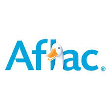Trump’s New Executive Order Aims to Slash Drug Costs by Aligning with Global Prices
May 12, 2025 – In a move to lower prescription drug costs for Americans, former President Donald Trump signed an executive order (EO) directing federal agencies to align U.S. drug prices with those paid by other nations. According to a White House fact sheet, Americans currently pay more than three times what other countries do for brand-name medications.
This marks Trump’s second major drug pricing EO in recent months. In April, he signed another order targeting high pharmaceutical costs through Medicare reforms and industry regulations. However, experts caution that these changes may take time to implement, meaning immediate relief for consumers is unlikely.
Key Provisions of the Executive Order
The latest EO outlines several aggressive measures to reduce drug prices, including:
- Cracking Down on Foreign Pricing Practices – The U.S. Trade Representative and Commerce Secretary must address foreign policies that artificially depress drug prices abroad while driving up costs for American patients.
- Setting Price Targets – The administration will communicate pricing benchmarks to drug manufacturers to push for lower costs.
- “Most-Favored-Nation” Pricing – The Department of Health and Human Services (HHS) must create a system allowing Americans to purchase drugs directly from manufacturers at internationally aligned prices.
If pharmaceutical companies refuse to comply, the EO empowers HHS to:
- Enforce most-favored-nation pricing through new regulations.
- Take additional steps—including antitrust enforcement by the Federal Trade Commission—to lower costs and increase competition.
Legal Challenges Ahead
While the EO mandates that HHS issue price targets within 30 days, legal obstacles loom. Industry analysts point to a similar Trump-era proposal that sought to tie Medicare drug payments to international prices—a policy struck down in court for bypassing required regulatory procedures.
Given this precedent, the order’s long-term impact remains uncertain. Legal battles could delay or dismantle key provisions, leaving American patients waiting for relief from soaring prescription costs.
What’s Next?
As federal agencies begin implementing the order, stakeholders—from drugmakers to patient advocacy groups—will be watching closely. Will this effort succeed where past attempts failed, or will legal and industry pushback stall progress? Only time will tell.
Stay tuned for updates as this story develops.

















